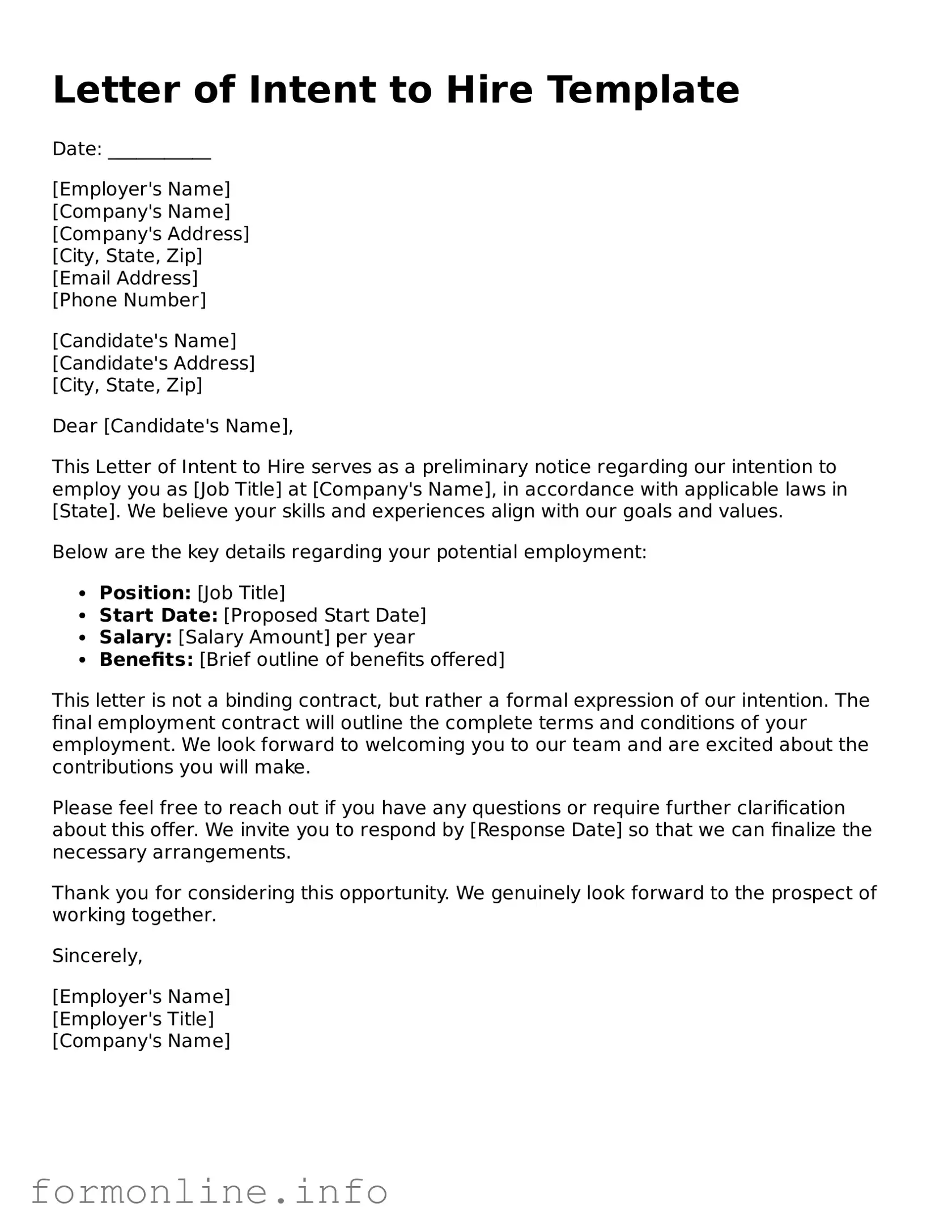Letter of Intent to Hire Template
Date: ___________
[Employer's Name]
[Company's Name]
[Company's Address]
[City, State, Zip]
[Email Address]
[Phone Number]
[Candidate's Name]
[Candidate's Address]
[City, State, Zip]
Dear [Candidate's Name],
This Letter of Intent to Hire serves as a preliminary notice regarding our intention to employ you as [Job Title] at [Company's Name], in accordance with applicable laws in [State]. We believe your skills and experiences align with our goals and values.
Below are the key details regarding your potential employment:
- Position: [Job Title]
- Start Date: [Proposed Start Date]
- Salary: [Salary Amount] per year
- Benefits: [Brief outline of benefits offered]
This letter is not a binding contract, but rather a formal expression of our intention. The final employment contract will outline the complete terms and conditions of your employment. We look forward to welcoming you to our team and are excited about the contributions you will make.
Please feel free to reach out if you have any questions or require further clarification about this offer. We invite you to respond by [Response Date] so that we can finalize the necessary arrangements.
Thank you for considering this opportunity. We genuinely look forward to the prospect of working together.
Sincerely,
[Employer's Name]
[Employer's Title]
[Company's Name]
